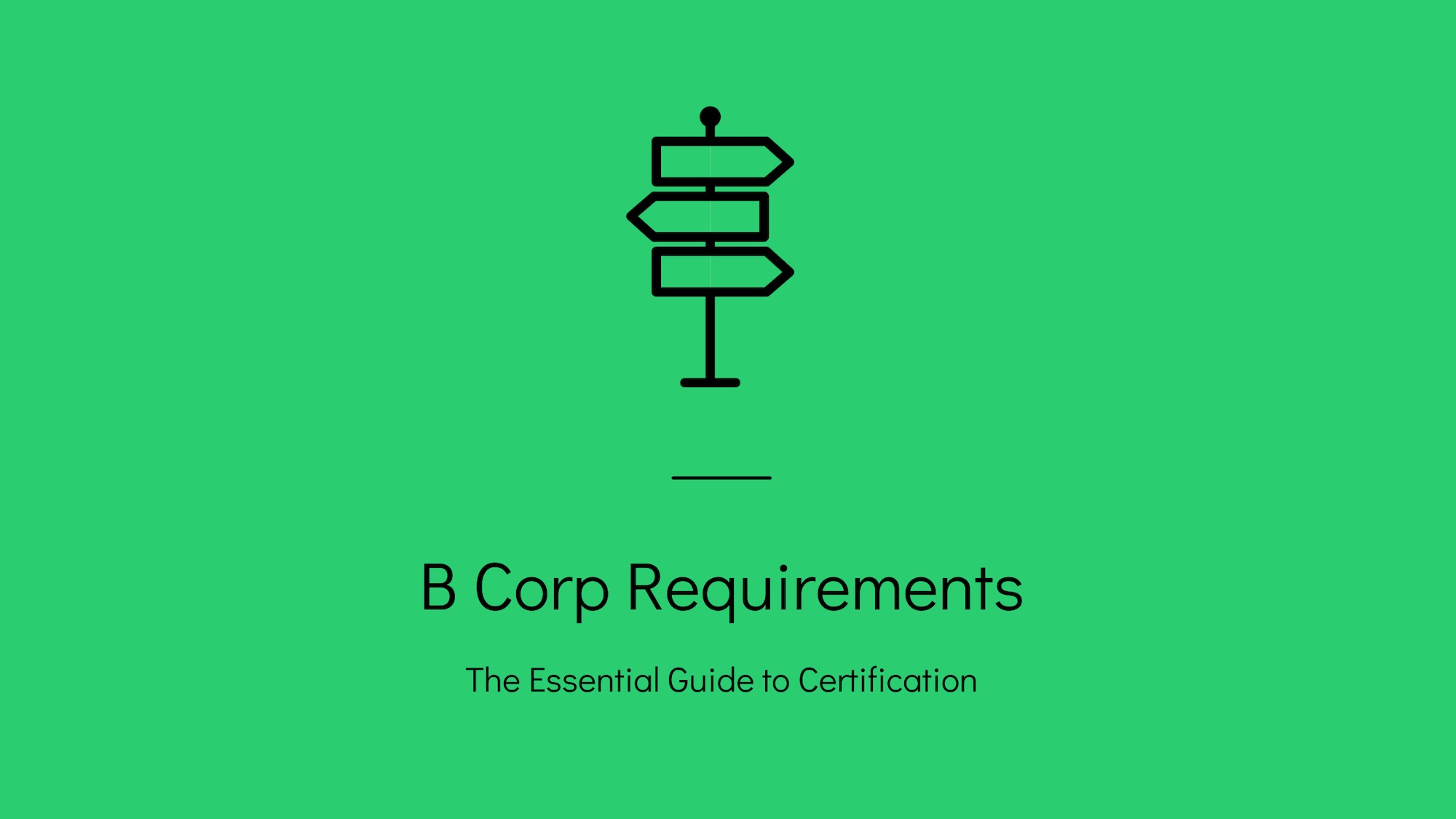
Are you considering B Corp certification for your company?
If you’ve seen the B Corp logo on products and websites, it’s worth considering it for your own business.
Getting B Corp certification is a lot of work, but the requirements themselves are straightforward. The hard work comes in making changes within your organization to meet the performance standards.
To meet the B Corp requirements, a company needs to do a few different things:
- Meet the performance standards
- Complete the Disclosure Questionnaire
- Meet the legal requirement
- Complete the B Lab certification process
- Meet the transparency requirements
Let’s look at each of these more closely.
What are the B Corp standards?
The B Corp performance standards are the backbone of the certification. They outline the specific practices that reflect a high standard of social and environmental performance and positive impact on stakeholders.
They are reflected in the B Impact Assessment (BIA), which is the online tool that B Lab uses to assess a company’s performance. The BIA evaluates a company’s impact on all stakeholders. It includes sections on Governance, Workers, Community, Environment, and Community.
As practices, tools, and resources continually evolve to help companies improve their social and environmental practices, so too must B Lab’s own performance standards continue to evolve. The BIA is updated every three years by the Standards Advisory Council, an independent group.
Ultimately, the standards are what make B Corps different from other companies: they are voluntarily adopting recognized best practices in a systematic and organized manner to improve their internal operations and magnify their positive impact.
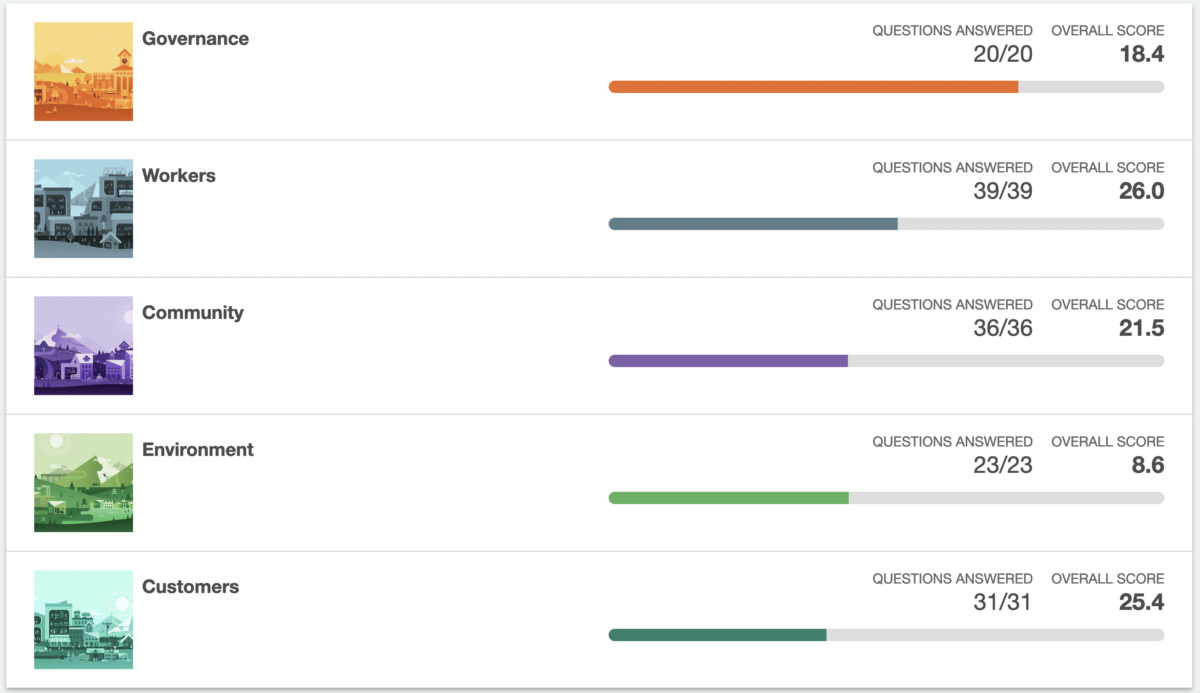
Companies earn points for the positive practices that they’re engaged in, and these points add up! When a company gets to a score of 80, they can qualify for B Corp certification.
What is the B Corp Disclosure Questionnaire?
The B Corp Disclosure Questionnaire (DQ) is a set of questions that companies must respond to in order to disclose to B Lab any sensitive “practices, fines, or sanctions” that they might have been subject to.
In keeping with B Lab’s commitment to transparency, companies must be transparent about anything that they are involved in that can be deemed sensitive or problematic. Notably, the Disclosure Questionnaire lives within the BIA, but the questions themselves aren’t scored.
Why is that?
Simply put, B Lab needs to have a way to assess any practices that may not have been addressed yet on the standard BIA questions. For example, a company may have scored well on the BIA but may be subject to numerous lawsuits from workers who were treated unfairly or may be selling customer data without their knowledge. The DQ provides a mechanism through which B Lab can learn more about the situation and determine how to proceed.
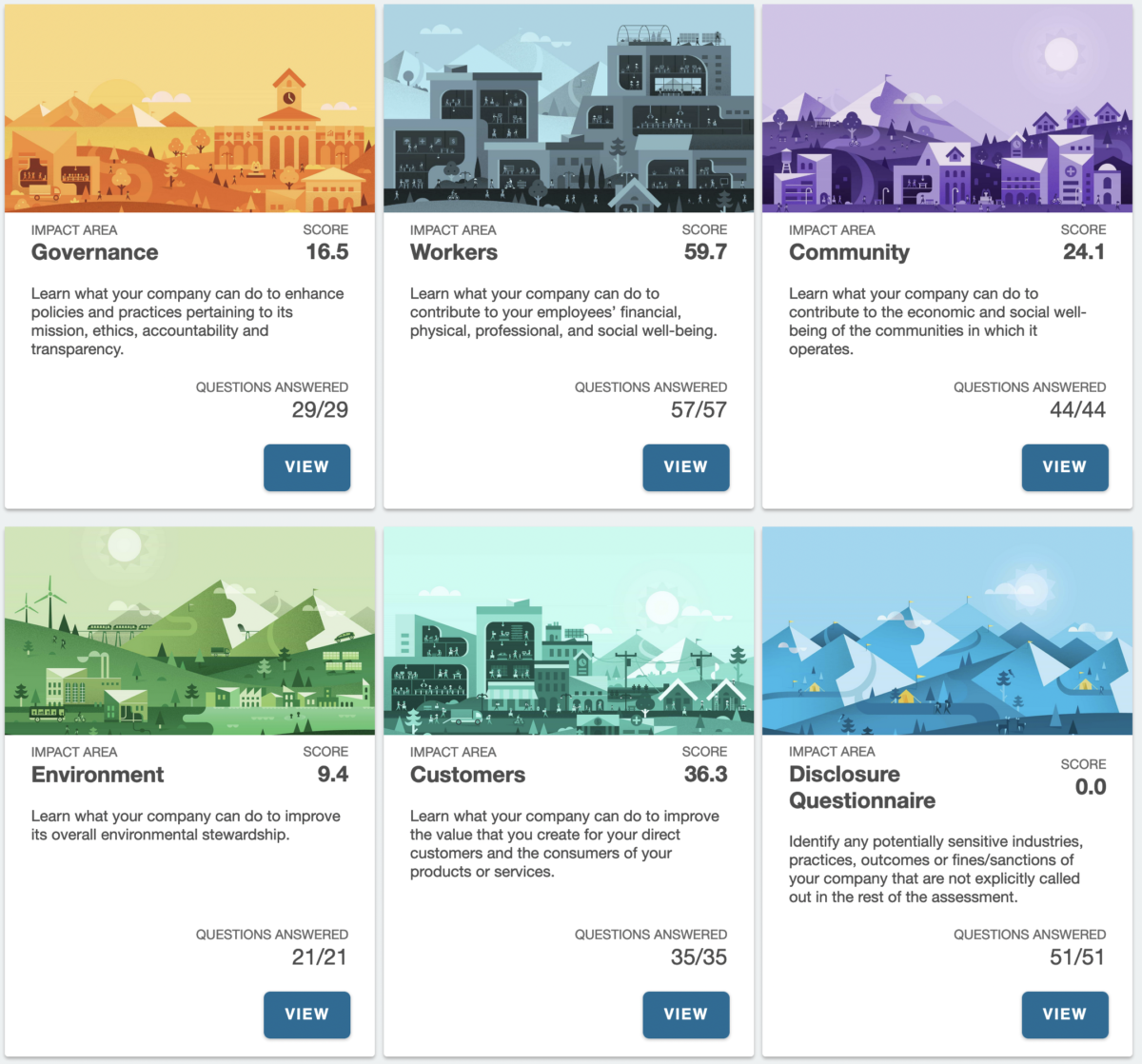
What is the B Corp legal requirement?
The B Corp legal requirement stipulates that all B Corps must consider the impact of all their decisions on all stakeholders.
This is a significant shift in how companies operate. They can’t just take shareholders into account, which is what most companies do these days.
Instead, they need to think about other people who have a stake in the company – workers, community members, customers. And – importantly – they are legally bound to do this.
The legal requirement often, but not always, includes becoming a Benefit Corporation. Benefit Corporations are legal entities, similar to C Corps and S Corps. The key difference is that Benefit Corporations take all stakeholders into account, unlike traditional companies.
One thing that’s often confusing for people when they first consider how the legal requirement will apply to their business is that companies may have different ways of meeting the requirement.
This is because not all companies are corporations and not all states recognize Benefit Corporations. If a company is a corporation in a state that doesn’t recognize Benefit Corporations, then clearly that is not an option for them.
In general, the requirements will be applied as follows (but be sure to check B Lab’s legal tool for your company’s requirements):
- Corporations in states that recognize Benefit corporations must become Benefit Corporations
- Corporations in states that don’t recognize Benefit Corporations must commit in their B Corp Agreement to consider stakeholders to the extent that they legally can in their state
- LLCs and LLPs need to adopt Purpose and Directors clauses as outlined in B Lab’s legal tool.
- Sole Proprietors do not need to meet a legal requirement since they do not operate as legal entities
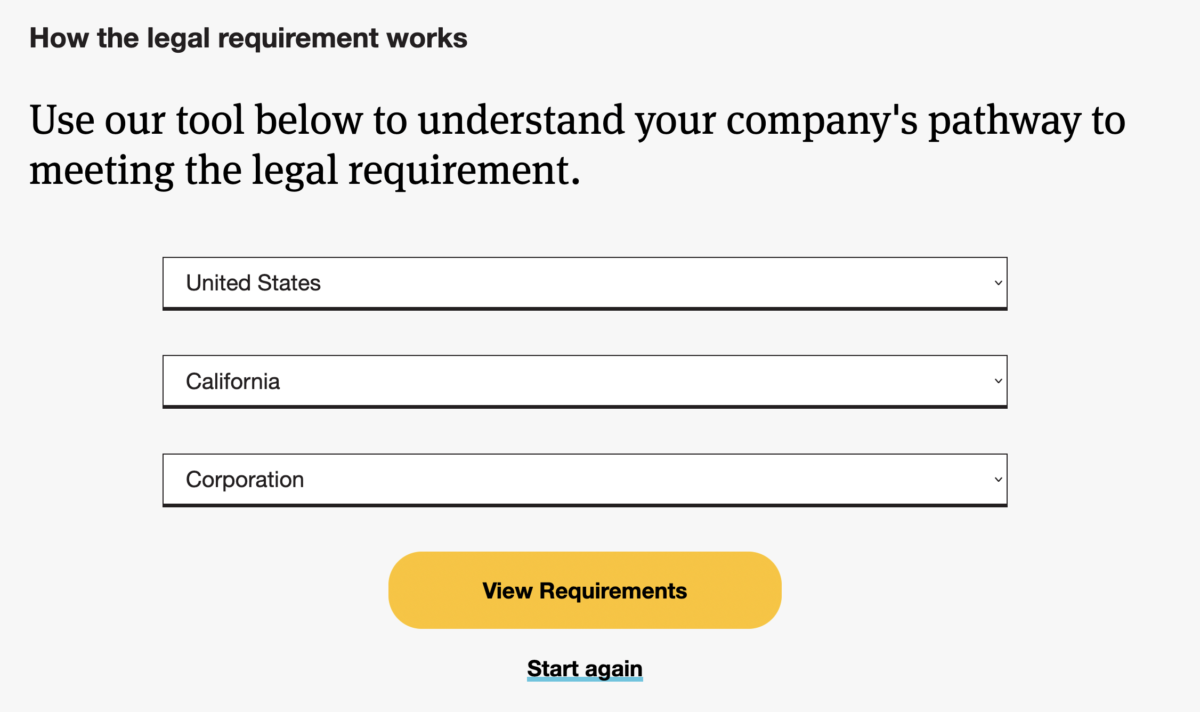
What is the B Corp certification process?
The B Corp certification process includes a rigorous review in which a standards analyst verifies that the answers provided on a company’s BIA are accurate so that it can get certified as a B Corp.
As companies answer questions on the BIA in the affirmative, they earn points. However, these answers are not verified by anyone; the company is in effect completing a self-assessment by answering the questions as best they can.
However, when a company has earned at least 80 points, it can submit its BIA for review to B Lab. Since the score at that point is based on the company assessing itself, a standards analyst is assigned to the company to verify the answers.
The final review process involves two distinct stages, evaluation and verification.
During evaluation, an evaluation analyst will conduct a high-level review to make sure that the company is eligible for certification. Once a company passes Evaluation, it moves on to Verification. A standards analyst will be assigned to review the company’s documentation and verify the answers.
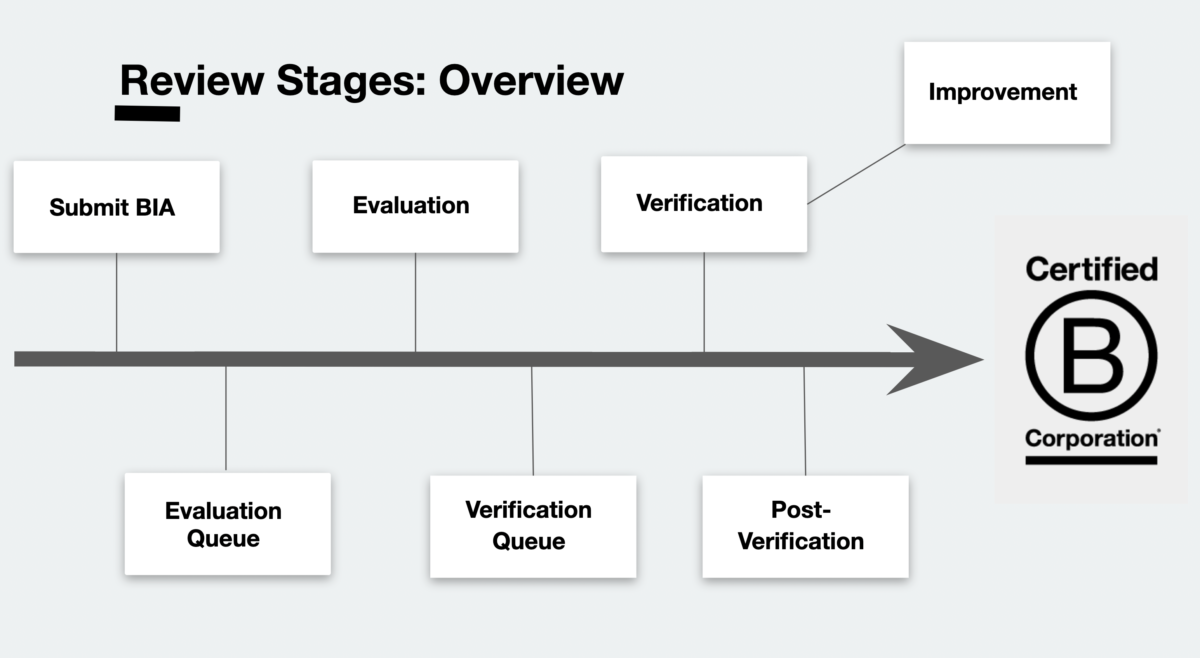
Once a company completes Verification with a score of 80, the company can go on to become a B Corp. (If the company’s score drops below 80, it may enter into an Improvement period to raise its score.)
For more details about this process, see our article about how to become a B Corp.
What are the B Corp transparency requirements?
A unique feature of B Corp certification is that it is paired with a transparency requirement.
B Corps can’t get the certification and then allow their performance on the BIA to remain hidden from public view, accessible to only a limited number of people that they choose to show it to.
Rather, they must meet the transparency requirement by posting their score on the B Corp Directory, showing the areas where they performed well and not so well for all the world to see.
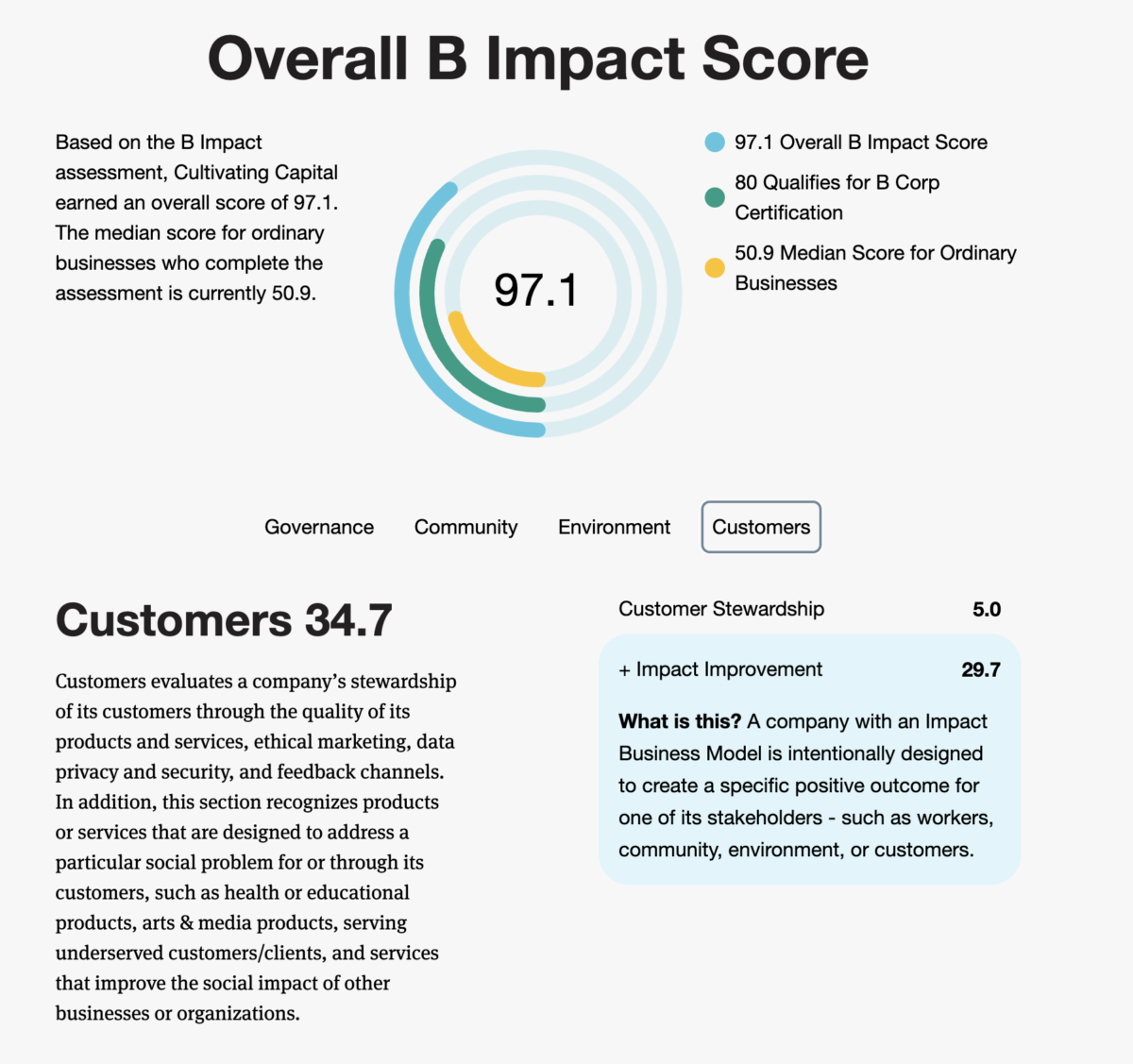
The public profiles for all Certified B Corps can be found on the B Lab Directory. Note that, although the overall score is listed, the individual answers to each question are not shown as this can include sensitive information.
In addition, some companies may be asked to provide Transparent Disclosures if they are involved in controversial industries or have answered in the affirmative to questions on their Disclosure Questionnaire.
How does B Corp Certification work?
B Corp certification involves meeting the performance and legal requirements, then completing the review process with B Lab. The certification is valid for three years and then a company must undergo recertification.
After B Lab has verified a company’s BIA and the score remains above 80, the company needs to do two things to finalize the certification:
- Sign the B Corp Agreement
- Pay the certification fees
As companies wait for their next recertification, they are often busy working to improve their impact and their score. B Corp certification marks the beginning, not the end, of their journey.
Is it hard to get B Corp Certification?
Yes, it is hard to get B Corp certification. A company must meet high standards for social and environmental performance, meet a legal requirement, and pass a rigorous review process. By B Lab’s own admission, it’s not designed to be easy or quick.
This is why the certification is so valuable, though: if it were easy, all companies could be B Corps.
As it is, Certified B Corps represent companies that are at the vanguard of a movement to make capitalism work for all. As with anything else, the work that goes into it makes it worthwhile, and leaders that are ready to join the movement can make it happen.
Interested in becoming a B Corp? We can help.
Speak with a B Corp consultant and take the first step today!

Carolina Miranda is the Founder and CEO of Cultivating Capital, a Certified B Corp since 2012, that helps companies implement impact and sustainability practices by making complex requirements clear, manageable, and actionable. As a B Corp ROI Strategist, she specializes in helping companies to recertify, measure, and manage the ROI from their certification.
With 15+ years in the B Corp movement, Carolina has been teaching B Corp standards since 2023 and is recognized for her expertise with the performance requirements. She’s been trained by B Lab twice, including as an external verifier in 2021 and as a B Corp Consultant in 2023. Carolina has received the 2020 Community Builders Award and the 2024 Hal Taussig Award for her contributions to the B Corp community.